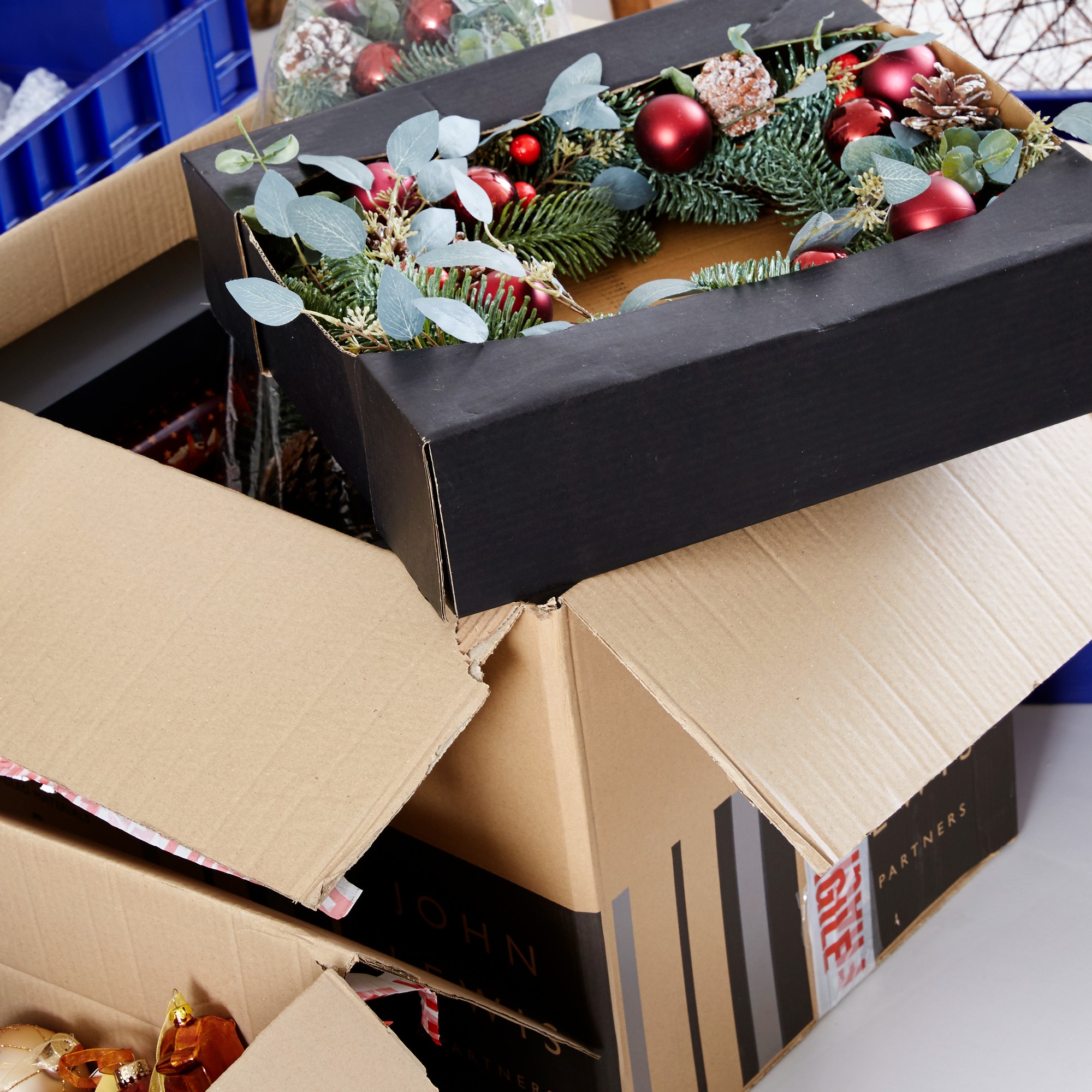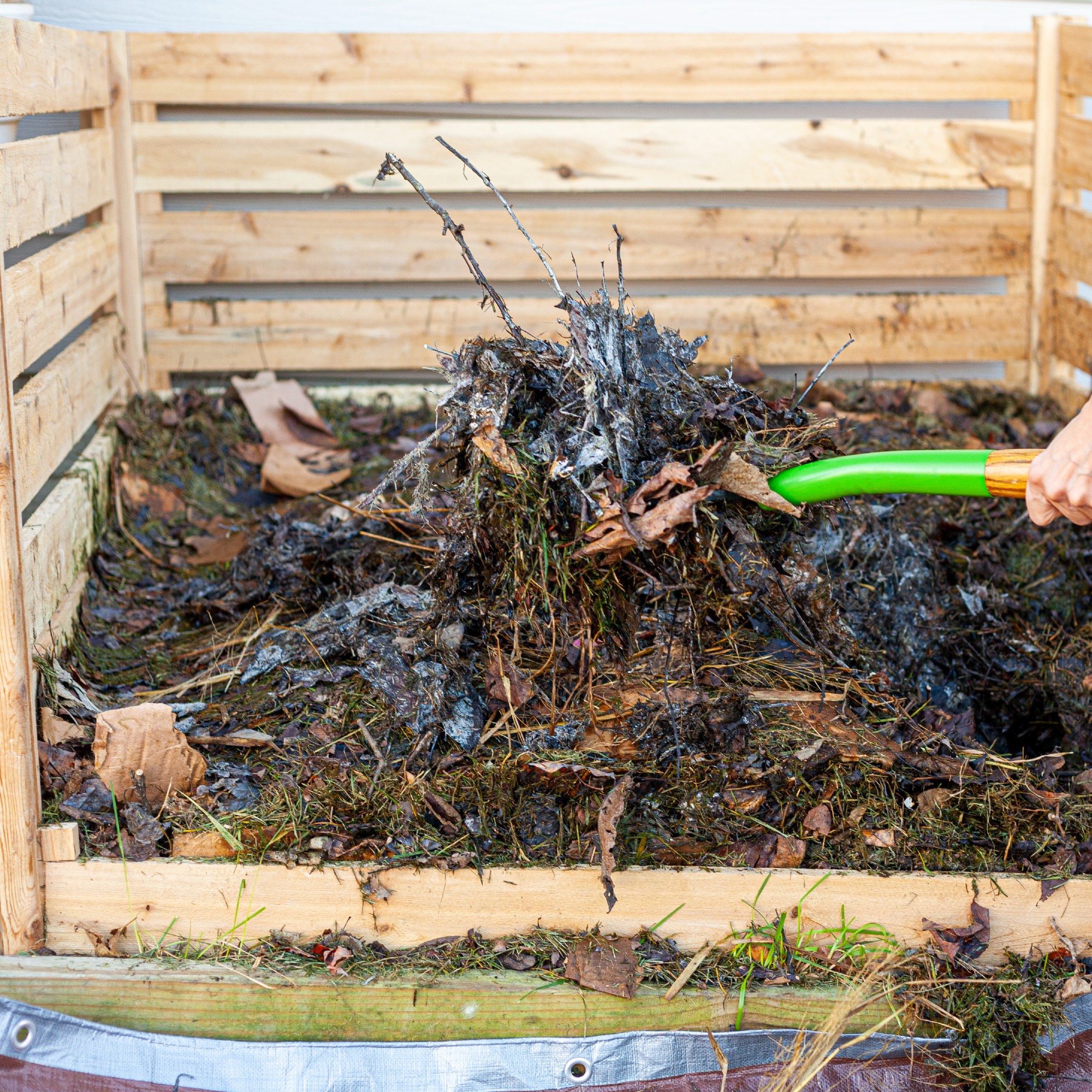
The aftermath of the festive holidays is usually filled with a lot of waste, mostly caused by paper and cardboard from delivery parcels and presents. While most of us would probably add these to the recycling pile without a second thought, Monty Don just shared a gardening tip to put leftover paper and cardboard in your garden compost instead.
You may already have been wondering whether you can recycle Christmas gift wrap, and now we've got a new route for you to look at if you've joined the home compost contingent. The all-knowing gardening expert took to his popular blog to share that adding paper and cardboard to your compost this time of year will improve its overall health and make it richer in nutrients.
And that’s what you want after all since compost is perfect for delivering those important nutrients to your plants. So this is how to make a compost with leftover cardboard and paper from your Christmas celebrations.

Monty Don’s garden compost tip
In the January instalment of his gardening blog, Monty Don noted on the garden compost, ‘One of the fall-outs of Christmas is the enormous amount of paper that it generates. But all the wrapping, packaging and cardboard can go on the compost heap. At this time of year there can be a shortage of ‘green’ or nitrogen-rich material such as mown grass to leaven the carbon-rich material like cardboard and paper, but it all rots down and will end up as part of the mix over the coming months.’
In compost-lingo cardboard and paper are called ‘brown waste’ and are a recommended addition to a garden compost by more than Monty Don. But we’re always grateful to the horticulturist for introducing us to new gardening ways, whether that’s Monty’s autumn leaves hack or his greenhouse advice.
‘Paper and cardboard can be added to the garden compost. It is especially important to add these materials during the winter and after the holidays when there is likely to be an abundance of paper and cardboard waste,’ says Jack Sutcliffe, gardening expert and co-founder of Power Sheds. ‘Paper and cardboard can help to provide carbon to the compost, which is essential for the composting process.’
And that’s not the only benefit that adding cardboard and paper to the compost has.

Benefits of brown waste in the compost
‘Paper and cardboard aid in moisture retention, preventing the compost pile from drying out too quickly, which can be especially helpful during dry winter months,’ says Steve Chilton, garden expert at LeisureBench.
But at the same time, it prevents the compost from becoming too wet. ‘It will help to absorb excess moisture, which can help to prevent the compost pile from becoming too wet and slimy,’ Jack says.
And lastly, ‘They create air pockets, promoting airflow within the compost pile and preventing compaction,' continues Steve. 'They act as a habitat for beneficial bacteria and bugs that aid in breaking down organic matter, leading to the creation of even more nutrient-rich compost. Paper and cardboard compost really is a sustainable practice that enhances soil quality and promotes healthy plant growth.'
But there are a few things that you should keep in mind when adding brown waste to the compost.

How to add brown waste to the compost
Firstly, don’t throw large chunks of cardboard into the compost as that’s likely to take a long time to break down.
‘It is important to shred or tear the paper and cardboard into small pieces before adding it to the compost to ensure that it breaks down quickly,’ Jack says.
And secondly, just like with recycling, not all paper is suitable for the compost.
‘Avoid adding holiday paper and cardboard that has been treated with glossy, shiny or metallic coatings because these materials often contain additives or inks that may not be suitable for composting,’ says Petar Ivanov, gardening expert at Fantastic Gardeners. ‘Additionally, avoid items with excessive tape, glue or any non-biodegradable items.’

Lastly, don’t forget to regularly turn your compost, even in the winter months as Monty Don himself pointed out, ‘Even though we think of the process of turning and making compost as heating it up in fact the important thing to do is to add oxygen and this stimulates bacteria to digest the material, be it kitchen waste or Christmas packaging, which in turn generates heat, even in mid winter.’







